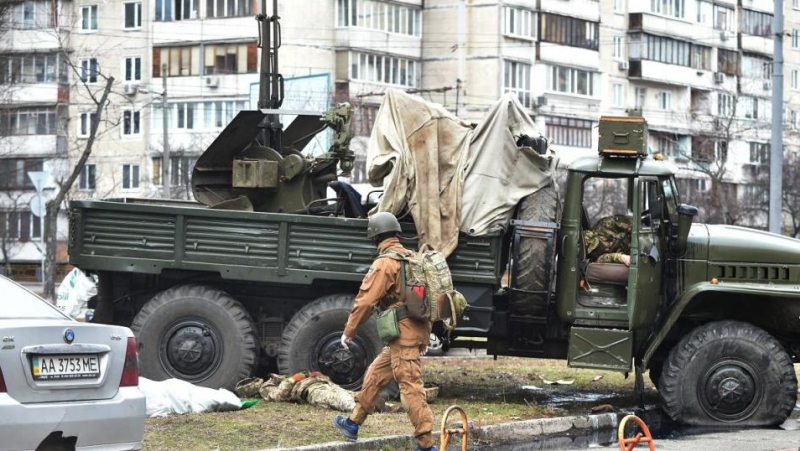“It is still a fluid situation. What we have seen is that the Ukrainian forces are fighting bravely and are actually able to inflict damage on the invading Russian forces,” Stoltenberg said after a video summit of NATO leaders.
“It is a full invasion of Ukraine. They are moving towards Kyiv and the stated goal is to change the government of Ukraine.”
Stoltenberg warned that the Kremlin’s aggression had created a “new normal”, threatening Europe’s broader security beyond non-NATO member Ukraine.
“We have already strengthened our deterrence and defence,” Stoltenberg said.
“Yesterday, allies activated our defence plans and, as a result, we are deploying elements of the NATO Response Force on land, at sea, and in the air to further strengthen our posture and to respond quickly to any contingency.”
The step is the latest by NATO aimed at beefing up its defences after allies spearheaded by the United States rushed thousands of troops to eastern members as the Kremlin moved on Ukraine.
“We have over 100 jets at high alert, operating in over 30 different locations and over 120 ships from the high north to the Mediterranean,” Stoltenberg said.
“This is to preserve peace to prevent an attack and to prevent that the war which is going on in Ukraine spills over to any NATO allied country.”
He did not give any details on where the response forces were being sent, saying it was up to NATO’s top military commander.
NATO’s response force is made up of 40,000 personnel and includes an 8,000-strong high-readiness contingent with air, sea and special operations soldiers that can be deployed within days.
RESISTANCE
Russia’s drive to seize control of Ukraine had quickly lost momentum amid resistance from Ukrainian fighters on the ground and in the air, a senior US defense official said Friday.
“Their momentum, particularly as it comes to Kyiv, has slowed over the last 24 hours,” the official said.
Russian forces, which entered Ukraine early Thursday, have yet to seize any major cities, or gain control of airspace, the official said.
“They have not achieved the progress that we believe they anticipated they would,” the official said, speaking on condition of anonymity.
“A good indicator of that is no population centers have been taken. None,” the official said.
The Pentagon believes that Moscow wants to seize control of Kyiv and replace the Western-leaning government with allies of the Kremlin.
And many worry that the powerful Russian force, with massive backup still awaiting on Ukraine’s border, could conquer Kyiv within days.
But so far, while Russian forces have focused on military targets, they have not been able to disrupt the Ukrainian military structure.
"As we see it right now that Ukrainian command and control is intact," the official said.
Nor have they been able to command air space. The Pentagon says that Ukrainian air defense systems are still working and the country’s air force is still able to fly and threaten Russian aircraft.
“They’re meeting more resistance than they expected,” the official said.
“We continue to have indications that it’s not going quite the way that they had anticipated.”
Starting with a massive missile barrage, Russia launched its invasion along three axes: the first a push from Belarus directly north toward Kyiv; the second from Russia’s Belgorod region toward the major city of Kharkiv in northeast Ukraine; and the third, from Crimea in the south towards Kherson.
While Russian forces have reached the outskirts of Kyiv, they have not been able to enter, and fighting remains heavy around Kharkiv, which also has not fallen.
In the south, Russians continue to push to Kherson but are also widening the front, landing amphibious forces to Crimea’s east to threaten Mariupol.
Russians have also sought to take control of the Kakhovka hydroelectric plant on the Dnieper river north of Crimea, launching cyberattacks on the plant, the official said.
The Pentagon would not estimate how many Russian forces had entered Ukraine, after having amassed more than 150,000 along the country’s borders before attacking.
The official said that they had moved "about a third of their combat power" into Ukraine, and the rest remain in place just outside.








